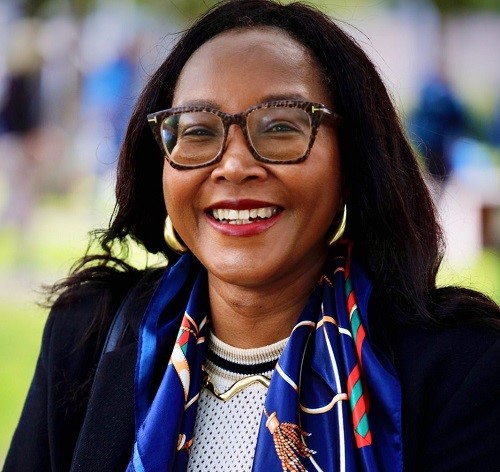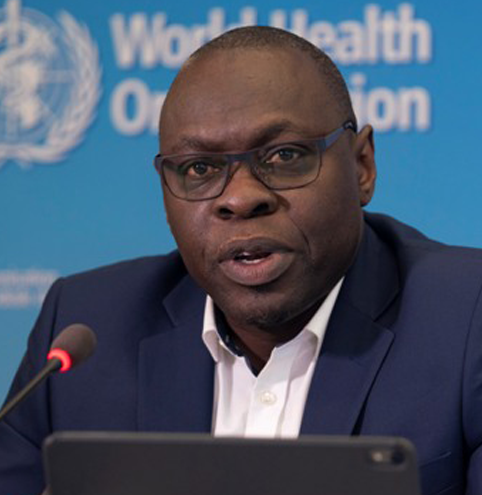Co-Authored by:
Prof. Francisca Mutapi & Dr. Ibrahima Soce Fall


In recent months in Tanzania and Zimbabwe, people who are almost never heard were given a chance to speak. They are people who are disabled or disfigured by Neglected Tropical Diseases (NTDs), who face daily challenges including epilepsy, swollen limbs and enlarged organs, vomiting, loss of consciousness , increased cancer risks and a host of other symptoms.
In sub-Saharan Africa, the burden of NTD disease disfigurement and disability is high. For example, 2.4 M people suffer from epilepsy related to infection with tapeworms similar to the one that infected US Presidential candidate RFK Junior. While there is treatment and surgical procedures to reduce seizures, this is often not available to sufferers in endemic countries.
Over 35 million people in Africa suffer from swelling of organs (e.g. limbs and testicles in males) due to elephantiasis and just under 2 million people globally have lost their vision due to trachoma. Schistosomiasis causes several chronic conditions including vomiting, loss of consciousness due to bleeding oesophageal varices, liver fibrosis and cancer, and enlarged liver and spleen.
The World Health Organisation recently published its 2024 Global update on NTDs, and found that although fifty countries have eliminated at least one NTD, progress is slow in other areas, particularly health service delivery to people living with NTD-related disease, disability and disfigurement. Of the 178 countries considered endemic for at least one NTD that causes disability, only 19 countries currently have guidelines, protocols or policies dedicated to the management of those disabilities. This perpetuates the neglect of millions of people and compromises universal health coverage.
Poor service provision presents both a challenge and an opportunity. The challenge lies in ensuring that progress towards the 2030 NTD targets does not leave anyone behind. The opportunity is that we can engage people with lived experiences to develop appropriate interventions and care pathways.
In order to provide comprehensive services for this group of patients, we first need to better understand the impact of the diseases on their daily lives. This is usually measured by calculating the number of health years lost due to ill-health, disability, or early death; i.e., disability-adjusted life years (DALYs). As informative as DALYs are, they do not fully capture the impact of NTD disease, disfigurement and disability on affected people. Their lived experience is critical in order to fully comprehend the challenges arising from the disease and the desired appropriate interventions.
WHO has recognised the important role of people affected by NTDs and recommended that they are at the centre of NTD programmes and decision-making processes. In 2022, it was highlighted that this was easier said than done, because very few countries had structures in place to effectively engage with these groups.
Recent work by the TIBA Partnership is aiming to set up these structures and engage affected people and their local community health workers in informing local health policy makers, starting with a roadmap designed by people affected by NTDs to inform health service provision.
The roadmap includes 5 specific asks for ministries of health and development partners:
- Ministries of health must develop guidelines, protocols or policies dedicated to the management of NTD-related disabilities and mental health support. Only 10% of the NTD countries are compliant of this, the WHO NTD roadmap is for 90% of endemic countries to have this in place by 2030.
2. There is need for institutionalization of the NTD affected voices movement at all levels – grassroots, NGOs, ministries of health and development partners- to ensure affected voices are represented at all levels of decision and health service provision.
3. There is need for effective communication and advocacy to ensure accurate and targeted health education and success of awareness campaigns. This should be complemented by community engagement to increase health seeking behaviour, intervention uptake and build trust between the affected voices and health service providers.
4. Equip and strengthen health systems so that they are responsive to mental health challenges, disfigurement and disabilities brought on by NTDs.
5. Researchers and innovators must continue to work on improved diagnostics, therapeutics and interventions and funders must fund this work.
These highlighted calls will not only have a significant impact on the quality of life of affected people, but has economic benefits too. For example, the household income lost from out-of-pocket health expenditures and the wages lost due to NTDs is estimated to be at least 33 billion International dollars per year.
These calls from people affected by NTDs voices are crosscutting, so that integrating them into health systems will impact several diseases, clarify and streamline care pathways and save on health costs.
Strengthening and intensifying cross cutting approaches in one of the three fundamental pillars of the WHO roadmap towards reaching the 2030 targets. More significantly, it will ensure we put an end to further neglect of a group of people already suffering from neglected diseases.
Recent News
© 2022 - Media Challenge Initiative | All Rights Reserved .


